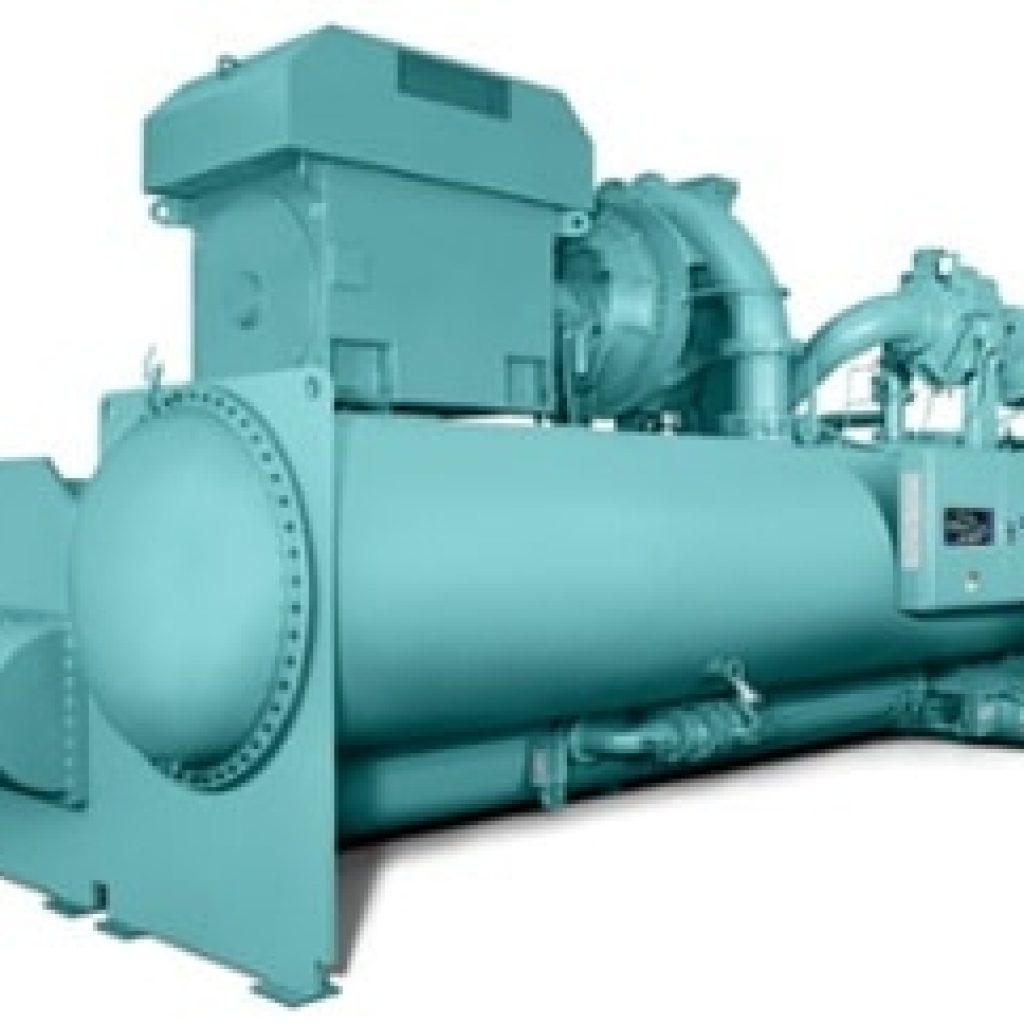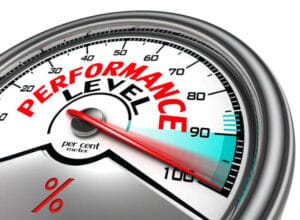Vapor Compressor vs. Absorption
Most of us are at least somewhat familiar with the basic concept of vapor compressor refrigeration. This process is typically used in refrigerators and freezers, and room and building air conditioning units. A refrigerant gas is compressed and pumped through a condenser circuit where it condenses into a liquid and releases heat in the process. The condenser generally consists of a set of coils that allow for efficient heat transfer aided by a fan that helps carry the heat away into the surrounding air. In larger commercial systems, the heat might be carried away through a water cooling system.
The cooled refrigerant then passes through an expansion valve that injects the refrigerant into the evaporator portion of the circuit where the pressure is lower which causes the liquid to vaporize. As the liquid vaporizes in the evaporator coils, it absorbs heat from the area that is to be cooled – such as from the inside of a refrigerator or freezer; or in commercial applications, inside the heat exchanger of a large water chiller.
These systems have been in use for a long time, they are relatively simple, and they work very well.
Absorption Chillers
Absorption chillers give us another alternative to the above scenario. While the mechanism is a bit more complicated, the principles of heat exchange are quite similar. The biggest difference is that vapor compressor systems require a mechanical compressor to pump refrigerant through the system while an absorption chiller uses heat to drive a thermal-chemical reaction inside a “generator-absorber” circuit which takes the place of the mechanical compressor in a vapor compressor system.
The basic idea is that a solution consisting of water (the refrigerant) and lithium bromide (the absorbent) is heated to the boiling point in a reduced pressure chamber using an external heat source. As the solution goes into vapor, the water vapor and the lithium bromide separate. The water vapor continues through the condenser circuit where it releases heat and condenses back into liquid form. This heat is carried away from the chiller by a water cooling system.
Meanwhile the lithium bromide returns to the generator where it starts absorbing the water vapor from the evaporator, effectively pulling the condensed water from the condensor through the expansion valve where it evaporates, absorbing heat from its surroundings. Finally, as that water vapor recombines with the lithium bromide, the entire process repeats itself.
The evaporator stage is where the chilling takes place (in both types of systems). In most commercial units, this process is used to chill water that is then pumped through the building’s HVAC system to provide air conditioning. As it cools the building, it absorbs heat and is then circulated back to the chiller to be chilled again.
Stay up to date with energy trends. Subscribe to the Energy Wire Blog Today.
I’ve oversimplified the process but if you’re interested in a more technical discussion, I’ve included a couple of links here and here.
Which is Better?
That depends. Perhaps a better question is, “why would I choose one system over the other?”
One reason for choosing an absorption chiller might focus on its lack of moving parts. There is no compressor so it produces much less noise and vibration. In some environments, this is a critical factor.
In terms of efficiency, however, the vapor condenser systems are the clear winners. The Coefficient of Performance (COP) for a typical vapor compressor system is around 3.5 while the COP for a typical absorption chiller is about 0.7. In other words, an absorption chiller requires about 5 times more energy to operate. Some of the new enhanced absorption systems, under equivalent circumstances, would have a COP of 1.2 or even 1.7 but they still require at least twice as much energy as an equivalent vapor condenser system.
Absorption chillers are much larger for the same amount of cooling, requiring larger and taller equipment rooms. Absorption chillers also have a higher initial cost and are more sensitive to minor deviations from level.
Given the efficiency advantages, the capital costs, and the fact that vapor compressor systems are much easier to operate and maintain, the scale appears to be tipping in favor of vapor compressor systems. That, however, fails to consider that not all forms of energy are created equal.
Vapor compressor systems require electricity to operate and electricity is not always available or might be very costly in some locations. Absorption chillers merely need a source of heat. For example, RVs and camper trailers all utilize small absorption chiller mechanisms in their on-board refrigerators. The heat is provided by a propane flame. Since electricity is rarely available in remote campsites, efficiency is no longer an issue.
Many industrial facilities have several options for heat sources. Perhaps other processes are generating heat that is simply wasted. CoGen systems are very efficient sources of heat which is often not utilized for any other purpose. In these cases, the heat is essentially free so who cares how efficient the system is? The free heat might also effectively compensate for the increased capital costs over the life of the system.
My point is that one must consider energy costs and availability, capital costs, operational factors, and specific needs when deciding which method of cooling is right for a given facility.
For a more in-depth discussion of the pros and cons of absorption chillers, please click here.






